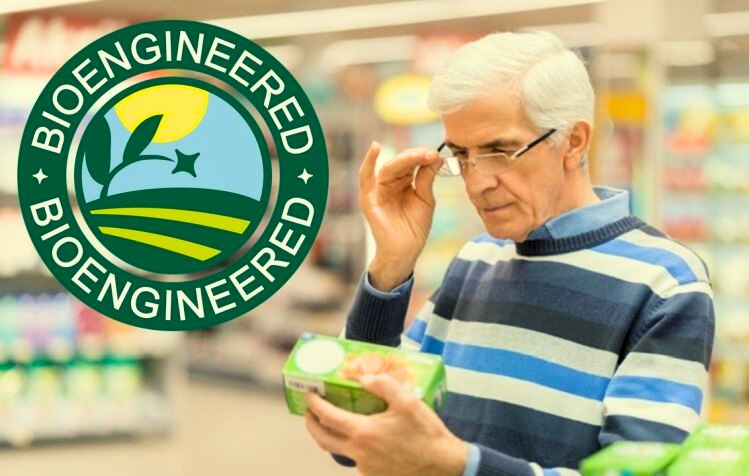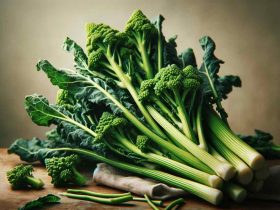Exploring the Future Plate: Discovering the Magic of Bioengineered Food
Bioengineered food is a topic that has been gaining attention in recent years. According to the U.S. Food that “contains detectable genetic material that has been modified through specific lab techniques that cannot be created through conventional breeding,” according to the Department of Agriculture, is considered to be bioengineered food. or found in nature”. This definition is similar to how genetically modified organisms (GMOs) are defined.
Understanding Bioengineered Food:
What is Bioengineered Food?
Bioengineered food is a term used to describe food that has been genetically modified using certain lab techniques that cannot be created through conventional breeding or found in nature. The U.S. Food that “contains detectable genetic material that has been modified through specific lab techniques” is considered bioengineered food, according to the Department of Agriculture. Bioengineered food are also known as genetically modified organisms (GMOs).
The use of bioengineered foods has become increasingly common in the food industry, with more than 90% of U.S.-grown corn, soybeans, and sugar beets being genetically modified. Because of this, a large number of processed goods containing high-fructose corn syrup, beetroot sugar, or soy protein may be subject to the new disclosure requirement. Other entire foods on the USDA’s list of bioengineered foods, such as certain varieties of apples, potatoes, and eggplants, could also need labeling.
The Science Behind It:
At the heart of bioengineered food lies genetic modification. Scientists identify desirable traits in one organism’s DNA and introduce them into another, effectively transferring those traits. This process has led to crops that require fewer pesticides, have longer shelf lives, and offer improved nutrient profiles.
Common Bioengineered Foods:
Bioengineered foods are becoming increasingly common in our lives. These foods are created by modifying the genetic makeup of crops to enhance their growth, yield, and resistance to pests and diseases. The United States Department of Agriculture (USDA) defines Bioengineered Vegetables as food that “contains detectable genetic material that has been modified through certain lab techniques that cannot be created through conventional breeding or found in nature”.
The Benefits of Bioengineered Food:


Enhanced Nutritional Content:
Genetically modified foods can be created to have more of the important nutrients our bodies need. For instance, scientists have made a special kind of rice called biofortified rice. This rice helps fight against not getting enough vitamin A, especially in places where people mostly eat rice.
Increased Crop Yield:
By adding characteristics that make plants stronger and able to grow better, genetically modified crops can make more food, which helps make sure there’s enough food for everyone around the world. This is especially important in places where crops often don’t grow well and fail.
Improved Food Security:
Genetically modified crops are made to be tougher against bugs and sickness. This means less of the crops are ruined, so there’s more dependable food available. This is really important since there are more and more people in the world who need to be fed.
Environmental Sustainability:
Genetically modified crops can be created to do really well in certain places. This means we don’t have to use too much water, fertilizers, or chemicals to help them grow. This smart way of farming helps take care of the environment and keeps things sustainable.
Controversies Surrounding Bioengineered Food:
Health and Safety Concerns:
A big worry about genetically modified food is how it might affect our health. Even though scientists test these foods a lot before selling them, we still wonder if there could be health effects that show up over a long time.
Ethical Considerations:
Changing genes makes us think about whether it’s right to meddle with nature. Some people say that genetically modified foods might mess up how ecosystems work and hurt the variety of living things in them.
Labeling and Transparency:
People deserve to understand what they’re eating. It’s really important to have clear labels on genetically modified foods so that everyone can decide what they want to eat. But making labels that are easy to understand and the same for everyone has been hard to do.
The Future of Bioengineered Food:
Bioengineering has the potential to create new foods that are healthier, more sustainable, and more affordable. Here are some ways bioengineered food is shaping the future of food:
1.Edible Vaccines:
Edible vaccines are vaccines that are delivered orally through food. They have the potential to revolutionize vaccination by making it easier and cheaper to vaccinate people in developing countries. Researchers are working on developing edible vaccines for diseases such as cholera, hepatitis B, and polio.
2. New Approaches to Treat Disabilities:
Bioengineering is being used to develop new approaches to treat disabilities such as blindness and deafness. Researchers are working on developing bionic eyes that can restore vision to people with retinal degeneration. They are also working on developing cochlear implants that can restore hearing to people with hearing loss.
The Role of Technology in Bioengineered Food:
Bioengineered food is also known as genetically modified food. It is a product of genetic engineering that involves the modification of an organism’s genetic material through certain lab techniques that cannot be created through conventional breeding or found in nature. The use of technology in Bioengineered Vegetables has revolutionized. The agricultural industry by providing farmers with crops that are resistant to pests and Riskly.They have a longer shelf life.
Benefits of Bioengineered Vegetables:
Bioengineered food offers a large range of benefits. Biotechnology has made it possible to Sebd genes with valuable traits from one plant to another, resulting in notable environmental and economic benifits that directly impact farmers and consumers. Biotech-modified foods are created to exhibit resistance to pests and diseases, reducing the need for pesticides and herbicides. This is not only saves farmers money but also minimizes the release of chemicals into the environment.
Controversies Surrounding Bioengineered Food:
In spite of its advantages, bioengineered food has remained a subject of contention. Certain individuals contend that genetically modified foods are not fit for human consumption. Nonetheless, numerous studies carried out by the USDA and the World Health Organization have established that the consumption of genetically modified foods does not present health hazards.
Public Perception of Bioengineered Food:
The general public’s view on bioengineered food is a mixture of perspectives. Some individuals hold the belief that it is both safe and advantageous, whereas others harbor concerns about potential risks tied to consuming genetically modified organisms. A study conducted at Binghamton University in New York unveiled a disparity in recognition between the bioengineered label and the Non-GMO Project verified label. Furthermore, people attributed distinct themes to the terms ‘bioengineered’ and ‘genetically modified’; ‘bioengineered’ was more frequently linked to scientific contexts, while ‘genetically modified’ was more commonly associated with agricultural connotations.
Acceptance of Bioengineered Food:
The reception of bioengineered food differs based on the country and geographical area. In the United States, Bioengineered Vegetables has garnered significant approval, and a considerable number of individuals regularly consume genetically modified organisms. On the contrary, Europe exhibits greater caution, expressing more skepticism regarding the safety and advantages of Bioengineered Vegetables.
Embracing the Bioengineered Food Revolution:
We are standing at the brink of a food revolution, propelled by advancements in bioengineering. Bioengineered food, including the ever-evolving Huaraches Food, refers to food containing identifiable genetic material that has been altered using specific laboratory methods not achievable through traditional breeding or occurring naturally. The recent adoption of the U.S. Bioengineered Vegetables disclosure standard by the USDA mandates that genetically modified foods, like the innovative huaraches dishes, must bear a label. Consequently, this development has sparked extensive discussions and disagreements concerning the safety of bioengineered foods, including the tantalizing world of huaraches cuisine.






Leave a Reply